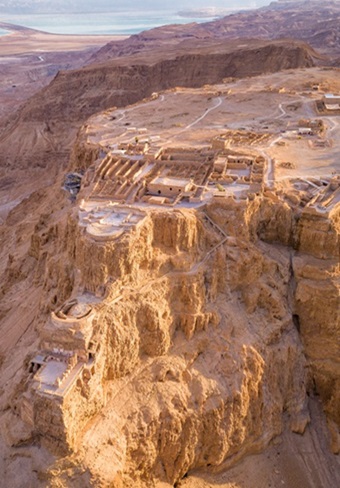Old Beit HaAravah and King Abdullah Bridge
 During the British Mandate Period, Jewish entrepreneur Moshe Novomeysky researched the Dead Sea and developed the Palestine Potash Company. In 1939 the Jewish emploeyes of the plant established a communal farm (Kibbutz) and named it after biblical Beit-Haaravah (cf. Joshua 18:22).
During the British Mandate Period, Jewish entrepreneur Moshe Novomeysky researched the Dead Sea and developed the Palestine Potash Company. In 1939 the Jewish emploeyes of the plant established a communal farm (Kibbutz) and named it after biblical Beit-Haaravah (cf. Joshua 18:22).
Being too isolated, during the 1948 Israeli-Arab war, its 200 residents were cleared by 17 boats to Sodom, and the site was abandoned. The Jordanians destroyed the remains of the village, and today, only its small cemetery is still visible. In the 1950s, the Jordanians built a bridge over the Jordan River next to the abandoned kibbutz named it after King Abdullah I. During the Six-Day War in 1967, Israel bombed the bridge, leaving it unusable ever since. In 1980 Israel established a new village named Beit Ha’aravah 3 miles west of the historical site.
- Many Israelis are familiar with a song by Shmulik Kraus presenting his father’s memories of the old kibbutz of Beit-Haravah.
Touring Old Beit HaAravah and King Abdullah Bridge
The Kibbutz cemetery and Abdullah Bridge are 2 miles south of Jesus’ baptismal site. Reaching the sites requires a permit from the Israeli Army (IDF). These sites present a less-known yet fascinating chapter in the history of the State of Israel.
A site tour can be combined with a day tour of the Dead Sea.









